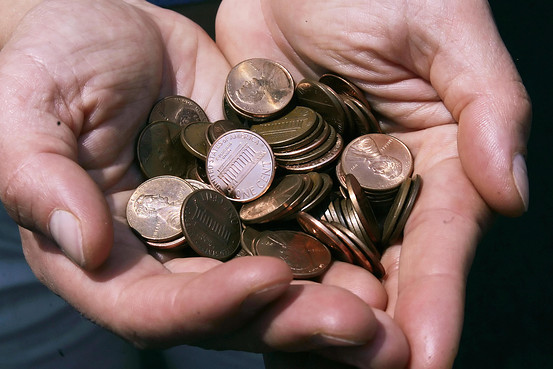
Monthly Archives: May 2016


I’m Late, I’m Late, for a Very Important Date…
My name is Scott Bowles, and I’m a punctu-holic.
It’s an inherited condition — from my mother’s side of the family. Dad was a legendary reporter, but he wouldn’t know punctuality if it broke his nose. He was unable to start a task until the 11th hour struck. He didn’t do taxes by April 15. He did taxes on it.
Mom, though, she’s another story. In my 51 years on Earth, I don’t recall running late a single time when she handled the stopwatch. The Bowles clan has made many a frenetic dash to be somewhere on time. But, without fail, it was due to distracted children or a father.
Like a lot of kids, I inherited a parental trait and exacerbated it. It’s not uncommon for me to show up a half hour before an event. Or, literally, I’ll stand at a door and gaze at my wristwatch, waiting for the second hand to hit the appointed time before I knock. I am, as clinical psychologists would put it, pathetic.
Of course, that makes me even more of an insufferable ass. If someone is running 15 minutes late (to an event, not to hang out) and does not give me a heads up, I’m pissed. If they are 30 minutes late, I’m gone.
So it was with great interest that I stumbled upon this study about the “punctuality challenged,” which perhaps was the researcher’s way of not offending readers. That’s like calling the dead metabolically challenged.
Still, I gotta say, I’ve never seen a more accurate study, which concluded that about 10% of Americans are chronically punctual, 20% are perpetually tardy, and 70% are “punctual but frenzied” to get to an appointment: They make it on time, but nearly break their necks doing so.
The study found the following about prompt people, all fitting mom to a tee:
1. THEY’RE REALISTIC THINKERS.
Punctual people know how long things take. Chronically late people, however, engage in what the study calls “magical thinking.”
“If once, 10 years ago, they made it to work in 20 minutes, they believe that’s how long it should take,” the study says. “They forget about the 99% of the times that took 30 minutes.”
2. THEY GIVE THEMSELVES BUFFER TIME.
Punctual people are usually early, says the research. “Being late makes them stressed out and they don’t like feeling rushed,” according to the study. “Late people get stressed out from being late, too, but they don’t strive to be early; they tend to time things to the minute.”
For a 9 a.m. meeting, for example, a punctual person would try to arrive by 8:45 a.m. or 8:50 a.m., allowing enough time for an unexpected delay, such as traffic or a full parking garage. A punctual person reviews directions, checks traffic reports before leaving, and some will even drive to a new location the day before to understand the route. To be punctual, plan to arrive early, the study said.
3. THEY’RE ORGANIZED.
The study says that 45% of everything we do on a daily basis is automatic: “Our lives are filled with habits—from the way you brush teeth to how you get dressed and leave for work,” the report says, adding that they’re necessary. “If we didn’t do things automatically, it would take us forever to get through our day.”
The habits of people who are always on time are highly structured. They analyze their daily activities, set routines, and stick to them on regular basis. Chronically late people, however, don’t have structure and often fall on the attention deficit disorder spectrum, says the study.
4. THEY’RE COMFORTABLE WITH DOWNTIME.
Being punctual often means getting to meeting or an appointment early. Punctual people use the extra five or 10 minutes as a chance to catch up on emails, read over notes, or simply enjoy the solitude.
Chronically late people, however, hate downtime. They enjoy the thrill of that last-minute sprint to the finish line and crave stimulation. To be more comfortable with downtime, bring along something to fill those spare moments. “Knowing that you have something to occupy your time will help,” the report said.
Mom never needs something to occupy her time. Though a voracious reader, mom will sit, Buddha-like, until it’s time. Unless she were at home, where her Southern belle lilt was unmistakable. “Let’s git goin’; it’s taaahm.”
Speaking of which, I better file this. It’s due in 17 hours.

My Two Cents Worth; Now Worth 3.4 Cents!
Like most guys (and this is statistically true), I keep my spare change instead of doing something useful with it, like using it.
At the end of the day, I drop whatever spare coins I have into a plastic jar with the lid cut off. Every four or five months, I lug the 400-pound jug of coins to Coinstar, which tallies the total and rips me off 9% for the counting effort.
That money, in turn, is used on crap. Magic tricks, gadgets and whatzits, candy bars.
But I recently read a story that let me know just how much I was getting ripped off. By the government, no less.
The study by the U.S. Mint found that it cost 1.7 cents to produce a penny, eight cents to produce a nickel. 
According to the Treasury’s biennial report to Congress, the government takes a loss of $90.5 MILLION a year in manufacturing the coins, which have become, quite literally, trash for many Americans. The same study found that 2% of americans throw away spare pennies instead of collecting them in a piggy bank, which is becoming about as useful as a pay phone nowadays.
“There are no alternative metal compositions that reduce the manufacturing unit cost of the penny below its face value,” the report to Congress said.
The government makes a mint on other coins. A dime costs 3.9 cents to make, and a quarter 9 cents. All together, the Mint made $289.1 million on seigniorage–the difference between the value of the coin and the cost to make it–despite a $90.5 million drag from the penny and nickel.
I’ve always had a thing for coins. Being a wannabe magician requires you befriend them.
So did being a crime writer all my life. In my first weekend covering cops in Washington DC, a homeless man who called himself Blelvis the Black Elvis approached me for any spare change. Unaware how common panhandling was in DC (in Detroit they just take your wallet), I made the mistake of reaching into my pocket to rummage. That, apparently, is the universal sign language for ‘sucker.’
All I had was 11 cents, a dime and a penny. I apologized and told him that was the sum of my portable wealth.
“That’s more money than I had five seconds ago, thank you,” he replied.
Then he broke into a brief, drunken rendition of Blue Suede Shoes. I’ve paid a lot more for a lot less in return on investment in my life.
Since that day, I have a rule of thumb: If I drop a penny, it stays wherever it fell. If I find a penny, it goes into my pocket, with a wish. Usually it’s that Blelvis has enough change to croon You Ain’t Nothin’ But a Hound Dog.
Rock on, Abe.
